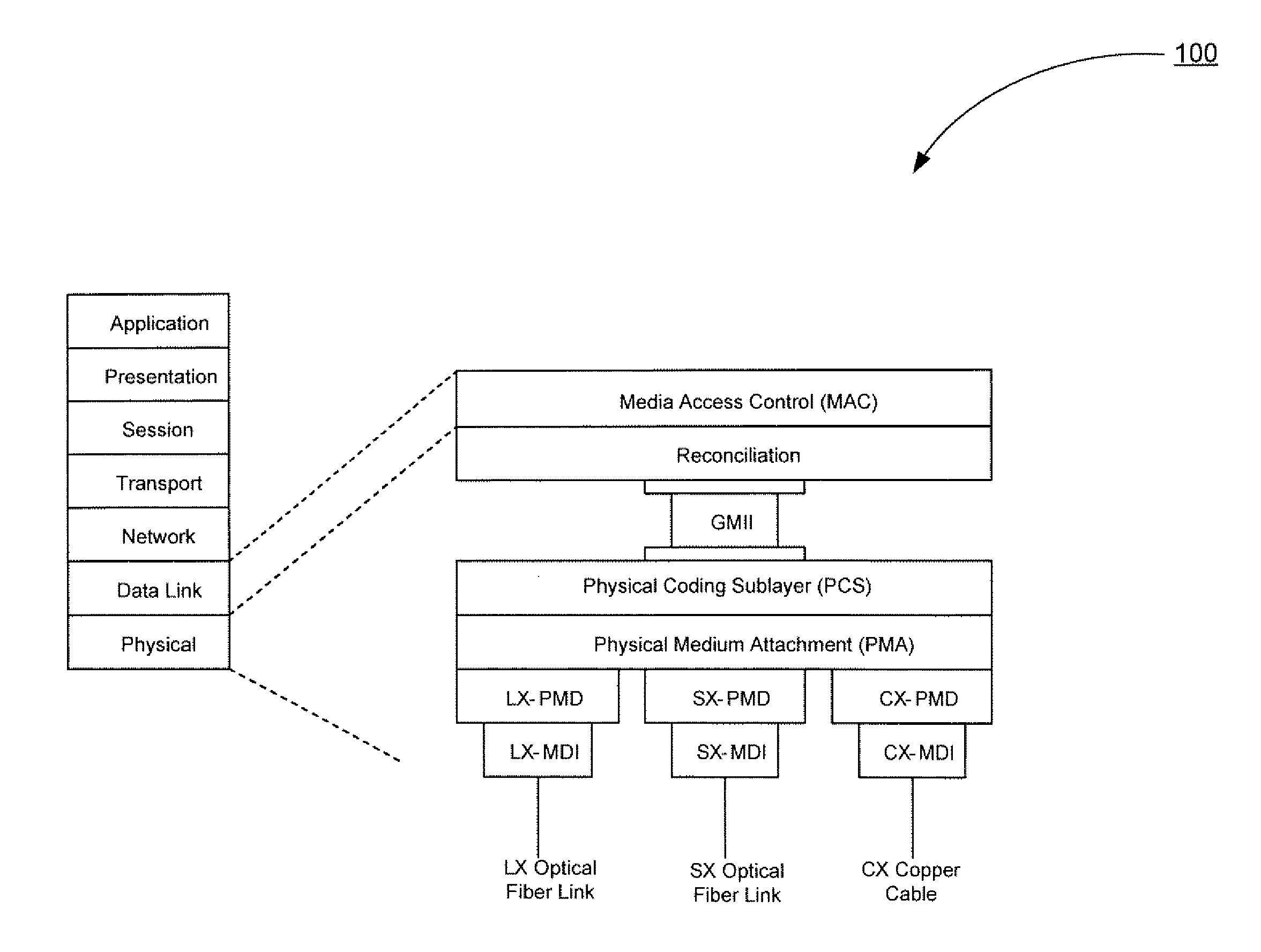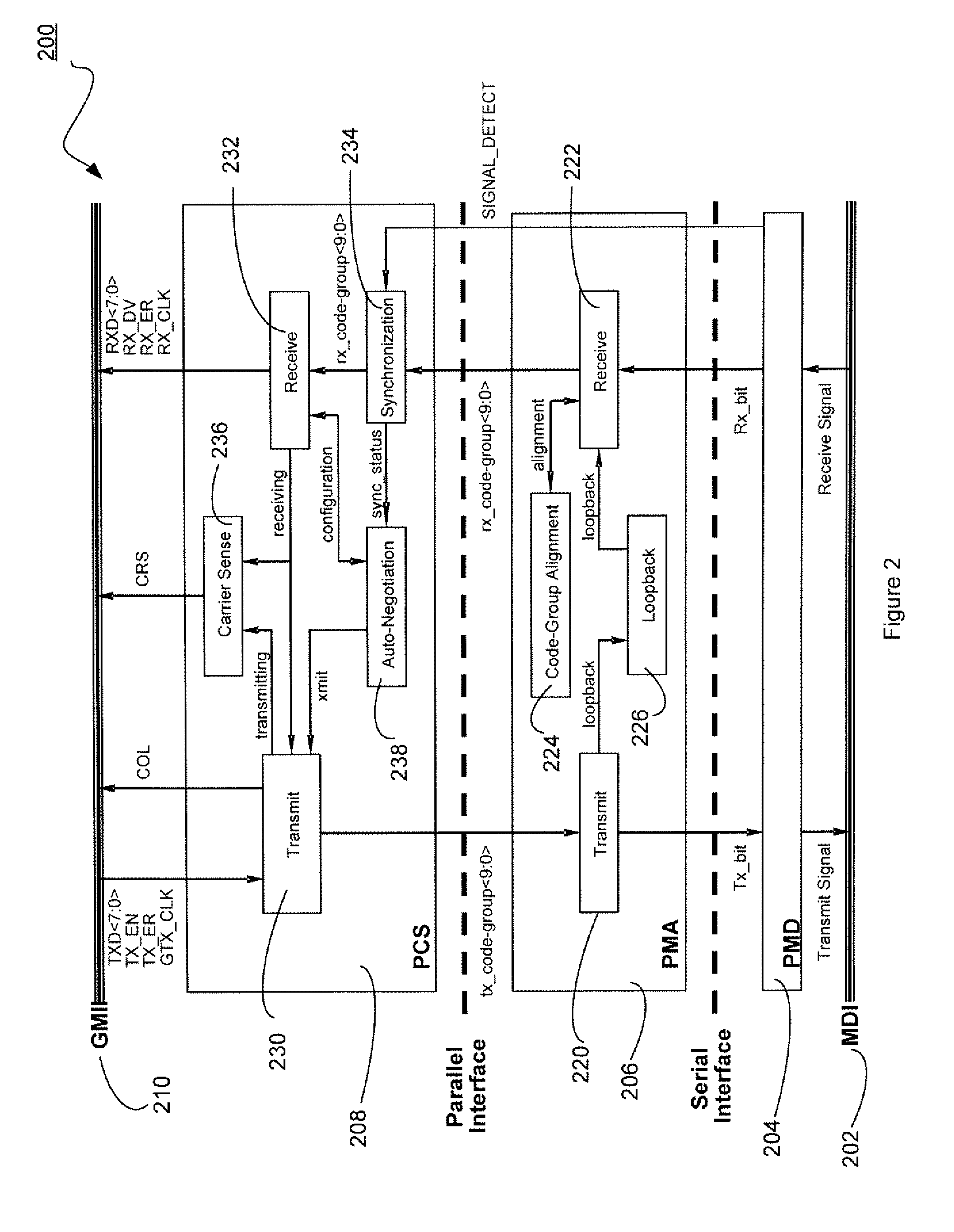Techniques for time transfer via signal encoding
a signal encoding and signal technology, applied in the field of telecommunications systems, can solve the problems of not being well suited to applications requiring precise synchronization, difficulty in real-time or timing sensitive applications that require synchronization, and network technologies facing. achieve the effect of high bit transition density
- Summary
- Abstract
- Description
- Claims
- Application Information
AI Technical Summary
Benefits of technology
Problems solved by technology
Method used
Image
Examples
Embodiment Construction
[0040]The present disclosure relates to enhancements to a Physical Layer of Gigabit Ethernet that enable accurate distribution of time and frequency. In accordance with the present disclosure, network slave devices may synchronize to a master reference time source (or server) using a messaging protocol. The messaging protocol may be a ranging technique by which the slave devices (or clients) may estimate their time offsets from the master time reference. The slave devices may accomplish this by exchanging a series of timestamped messages at the Physical Layer with a central time server.
[0041]A Physical Coding Sublayer (PCS) of the Physical Layer of Gigabit Ethernet may map Gigabit Medium-Independent Interface (GMII) signals into 10-bit code-groups, and vice-versa, using an 8B / 10B block coding scheme. The PCS may accept packets from a Reconciliation sublayer via the GMII and encode a packet before passing it to a Physical Medium Attachment (PMA) sublayer. The PCS may also decode a bi...
PUM
 Login to View More
Login to View More Abstract
Description
Claims
Application Information
 Login to View More
Login to View More - R&D
- Intellectual Property
- Life Sciences
- Materials
- Tech Scout
- Unparalleled Data Quality
- Higher Quality Content
- 60% Fewer Hallucinations
Browse by: Latest US Patents, China's latest patents, Technical Efficacy Thesaurus, Application Domain, Technology Topic, Popular Technical Reports.
© 2025 PatSnap. All rights reserved.Legal|Privacy policy|Modern Slavery Act Transparency Statement|Sitemap|About US| Contact US: help@patsnap.com



